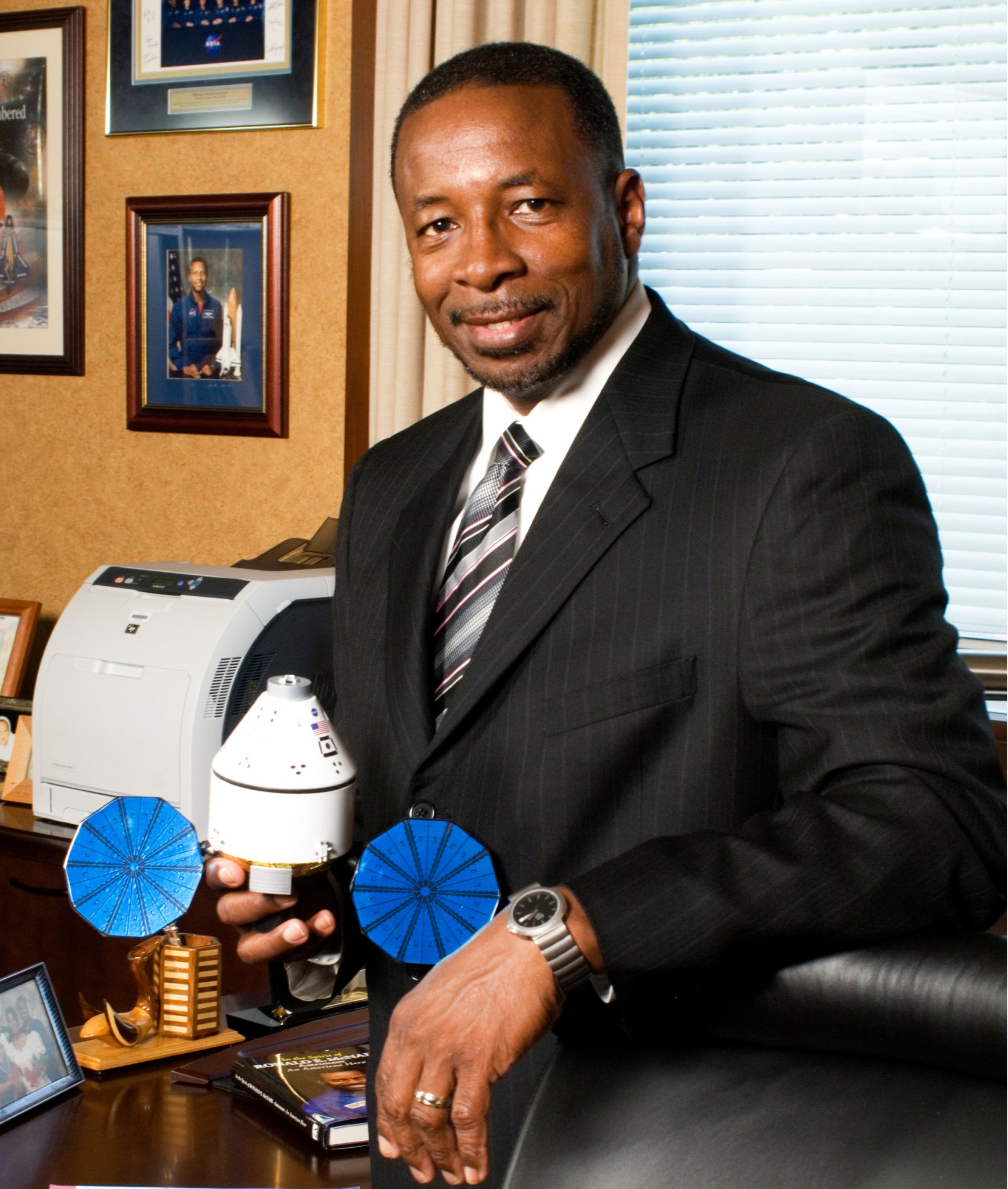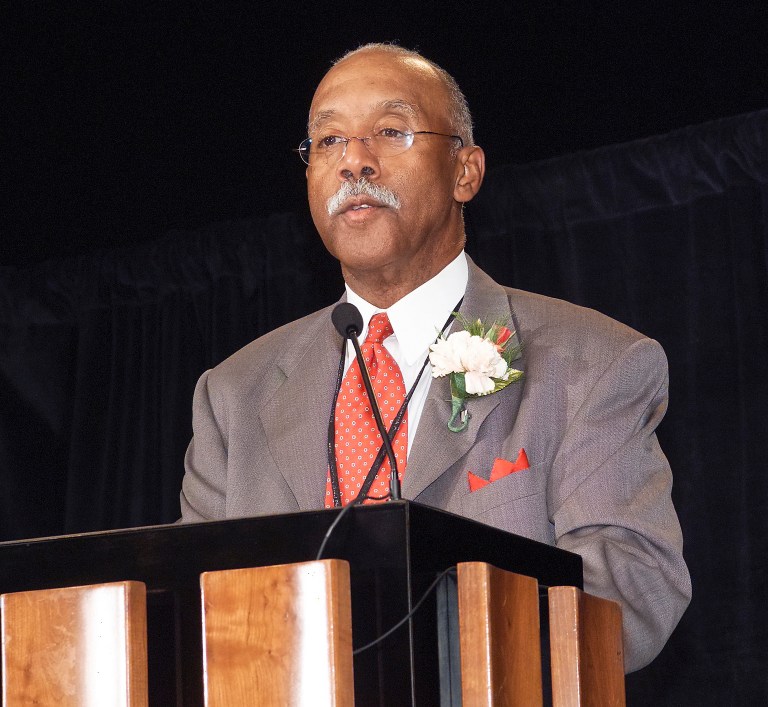
Woodrow Whitlow, Jr.
Former Director, Glenn Research Center (Dec. 2005–Mar. 2010)
Woodrow Whitlow, Jr. served as center director at NASA’s Glenn Research Center from December 25, 2005 to March 2010. Under Whitlow’s watch, NASA Glenn increased its role in high-profile agency programs, demonstrated that it could meet its commitments on budget and schedule, and stemmed a period of staff reductions.
Despite growing up near the Ford Motor Plant in Michigan, Woodrow Whitlow was obsessed as a youth in the 1960s with spaceflight, not automobiles. Whitlow excelled at school, particularly in science and math, and dreamed of becoming an astronaut. To facilitate this goal, a high school teacher urged Whitlow to attend Massachusetts Institute of Technology (MIT), which had a Department of Aeronautics and Astronautics. Between 1974 and 1979 Whitlow earned his bachelors, masters, and doctoral degrees in aeronautics and astronautics at MIT.
Whitlow began his NASA career in 1979 as a researcher at the Langley Research Center studying unsteady aerodynamics and aeroelasticity. He authored a spate of technical reports that analyzed unsteady transonic flow across airfoils. Although his application for NASA’s astronaut corps was not accepted, Whitlow participated in a one-year leadership development program at headquarters that led to branch and division chief positions at Langley. He was detailed again to NASA Headquarters to help identify and develop new long-range technologies that could dramatically improve aircraft.
In 1999 Whitlow was named director of research technology at NASA Glenn. During this period, he and Arun Sehra coauthored two papers analyzing various novel technologies to provide cleaner, quieter, and more efficient aeropropulsion. He also served on an agency team that developed a blueprint for a new era of advanced aeronautics.
In September 2003, Whitlow was selected to serve as deputy director at NASA’s Kennedy Space Center. Among other responsibilities, he helped implement new safety procedures during the Return to Flight activities following the Columbia accident.
In September 2006, the NASA administrator announced that Whitlow would assume the center director position at NASA Glenn at the end of the year. The center was dealing with sharp cuts to its aeronautics and science programs to cover insufficient funding for the agency’s new Constellation Program, an effort to establish a permanent base on the Moon and send humans to Mars.
In response, Whitlow sought to prioritize space flight system development and program management, while retaining aeronautics and science as secondary missions. One of his first acts as director was inviting the Constellation program manager to visit the center in January 2006 to learn about Glenn’s capabilities. Whitlow also made frequent trips to NASA Headquarters to determine which Constellation programs fit Glenn’s competencies.
Whitlow began reorganizing the staff to better address NASA’s new focus. He consolidated the space work that had been spread across several organizations into the new Space Flight Systems Directorate; merged all engineering activities into the Engineering and Technical Services Directorate; and consolidated the aeronautics research management into the Research and Technology Directorate. In addition, Whitlow brought in over a dozen new senior managers.
This effort was rewarded in June 2006 when Glenn was given responsibility for the management and development of the Orion service module, the interstage adaptor, and the fabrication of the Ares I-X mass model. Glenn was later also assigned the development of a lunar rover and the acoustic vibration testing of Orion. The high-profile programs improved morale at the center and sparked public interest.
In 2007, the center began developing a facilities master plan that would dramatically alter the landscape of the campus over the next 20 years. The plan spurred the demolition of a number of historic but under-utilized facilities, the construction of new modern office buildings, and significant improvements to infrastructure. In addition, work began on the addition of an acoustic reverberation capability to the Space Power Facility in 2007.
By 2009, independent studies showed the Constellation Program was significantly behind schedule and over budget. The program was officially cancelled on February 1, 2010, but development of the required technologies would continue. Two days later, Administrator Bolden announced Whitlow would be transferring to NASA Headquarters to serve as the agency’s associate administrator for mission support.
Whitlow retired from NASA in August 2013. He was appointed executive in residence at Cleveland State University’s Washkewicz College of Engineering in early 2014.
Whitlow’s awards include NASA’s Distinguished Service Honor Medal; the Presidential Rank of Distinguished Executive; the Presidential Rank of Meritorious Executive; U.S. Black Engineer of the Year in Government; the NASA Exceptional Service Honor Medal; the NASA Equal Opportunity Honor Medal; the (British) Institution of Mechanical Engineers William Sweet Smith Prize; the Minorities in Research Science Scientist-of-the-Year Award; and the National Society of Black Engineers Distinguished Engineer of the Year Award. The American Institute of Aeronautics and Astronautics elected him as a Fellow in 2010. He also holds an honorary Doctor of Engineering degree from Cranfield University.
Additional Resources































